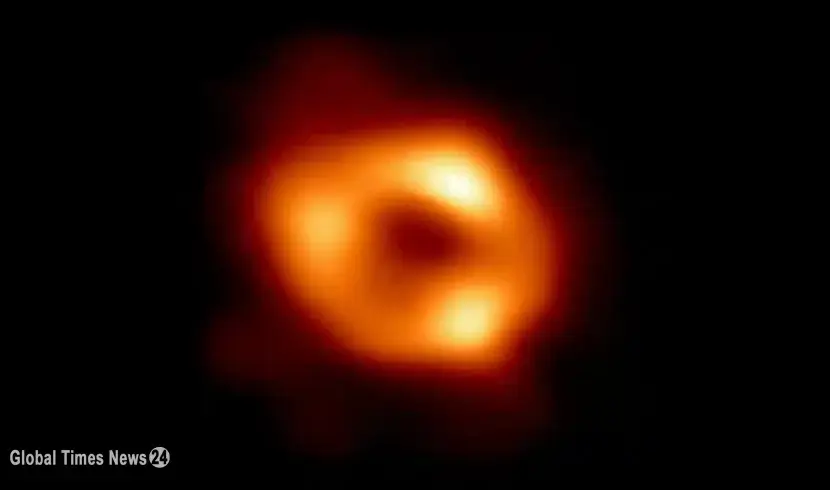Things They Didn't Tell You About Neptune at School
Table of Contents (Show / Hide)

Astronomers have discovered something weird happening on Neptune. Nearly all the clouds that decorate its apparent blue atmosphere have disappeared, leaving the far-flung world almost devoid of clouds. Unlike the calm blue sky on Earth, Neptune's sky is constantly changing and full of action. It has some of the fastest winds in our solar system, reaching up to 2000 km/hr. or 1200 mi/hr. These turbulent conditions whip clouds of methane and other gases into a never-ending show, like a dance, we can barely see from Earth. But here's the surprising part: lately, all the clouds have seemingly disappeared on Neptune, dramatically changing the appearance of the distant planet. Things took an interesting turn when scientists discovered the reason behind this change: the 11-year solar cycle, whose origin remains a mystery to date. So, how did astronomers discover the reason behind the disappearance of the Neptunian clouds? How does the Sun, lying 4.4 billion km away, affect the atmosphere of Neptune to such a great extent? Finally, and most importantly, what evidence do we have to support this idea?
Neptune is the least explored planet in the solar system, with Voyager 2 being the only spacecraft to have visited it. Voyager 2's historic 1989 flyby of Neptune unveiled a striking and enigmatic atmosphere. The spacecraft observed that the planet's atmosphere is quite turbulent, with strong winds and intriguing cloud formations. Additionally, the ice giant's atmosphere is divided into several layers, with the uppermost layer being the troposphere, and this is where the visible clouds form. The most captivating discovery was the Great Dark Spot, a massive storm system just like Jupiter's Great Red Spot. Voyager 2 found that Neptune's Great Dark Spot was as big as our planet. However, when the Hubble Space Telescope focused on Neptune in the 1990s, the storm had surprisingly disappeared. This was the first clue that the elements in the Neptunian atmosphere were subject to drastic transformation. The most crucial thing that Voyager 2 found out about Neptune was the chemicals that make up its atmosphere.
Analysis showed that these cloud structures are primarily composed of hydrogen, helium, and methane. Since the methane in Neptune's upper atmosphere absorbs all the red light from the Sun, the only light reflected is blue, which gives Neptune its typical bluish hue. Voyager 2 studied Neptune for five months and provided a treasure trove of information on the ice giant. However, because of the distance, engineering challenges, and high costs involved, no spacecraft has visited the planet after Voyager 2. But that didn't mean we ultimately gave up on the far-flung world. In fact, since the Voyager 2 mission, Neptune has been periodically observed using powerful space telescopes like the Hubble Space Telescope, which has allowed astronomers to track changes in Neptune's cloud patterns and even identify new features. Additionally, ground-based observatories equipped with adaptive optics have also provided high-resolution images of Neptune's atmosphere, revealing finer details of its cloud formations. But the cloud cover over Neptune is not uniform.
It keeps evolving, and the clouds have almost disappeared over the years. So, to monitor the disappearance of the clouds in detail, researchers examined the time variation in the cloud cover over the last three decades. They looked into the infrared data collected by the Hubble Space Telescope, the Keck Observatory, and the Lick Observatory between 1994 and 2022. And what they found is quite surprising. At a distance of 4.4 billion km from the Sun, Neptune receives just 0.1% of the sunlight that we do on our planet. Naturally, given this number, one would believe that the Sun cannot play a dominant role in the dynamics of Neptune's atmosphere. But when the scientists looked at the images of Neptune captured by the different telescopes over the last 29 years, they discovered significantly clear patterns between seasonal changes in Neptune’s cloud cover and the solar cycle. This means that even though the planet is extremely far from the Sun, it cannot escape the influence of the star.
Here are some images captured by the Keck Observatory and the Hubble Space Telescope between 2002 and 2020. These images have been used explicitly for the present study. The cloud activity decreased, particularly in the mid-latitudes, after the start of 2020. For example, since 2019, scientists have only seen one patch of wispy white clouds drifting around the planet's south pole. Even now, after four years, the clouds haven’t returned to their former level. Instead, Neptune is almost entirely cloud-free for the first time in three decades. Now the question is that how does the Sun play a role in all of this? To understand this connection, knowing about the solar cycle is essential. Similar to humans, who experience moments of high energy and times of extreme fatigue, the Sun also undergoes fluctuations in its energy output.
There are periods of heightened activity marked by abundant sunspots, energetic outbursts, and quieter phases. This periodic fluctuation in the Sun's energy emissions constitutes what we refer to as a solar cycle. It's like the Sun's way of altering its level of liveliness. Typically lasting around 11 years, a solar cycle reflects the Sun's changing behavior. During periods of solar turbulence, when the Sun is at its most active, the solar system gets flooded with more intense ultraviolet radiation. Solar cycles are a natural characteristic of the Sun's behavior and influence space weather, including their effects on Earth's magnetosphere and communication systems. In a recent study, scientists meticulously tracked the past two and a half cycles of solar activity, marked by maxima in 2002 and 2015 and minima in 1996, 2007, and 2020, to observe their relationship with Neptune's cloud formations.
This investigation unveiled a significant pattern: the emergence of clouds on Neptune tends to begin around two years after the onset of intense UV radiation. Furthermore, a notable connection was found between Neptune's cloud cover and its albedo—a measure of the sunlight a planet reflects. The planet's cloud cover and albedo peaked in 2002, followed by a decline in 2007. Subsequently, they surged again to a peak in 2015 before subsiding again. The timing aligns with the two most recent solar activity maxima, occurring in 2001 and 2015, thereby establishing a clear correlation between the two phenomena. One possible explanation for this phenomenon is the hypothesis that the Sun's intense UV radiation triggers a complex photochemical reaction resulting in the formation of Neptune's clouds. However, this relation is complex. For example, an increase in UV sunlight would increase the photolysis of methane gas, hence the production of hydrocarbons and associated hazes.
On the other hand, a UV surge may also lead to a darkening of aerosols and hazes, decreasing Neptune's overall brightness. However, we have only noticed a positive correlation between solar activity, cloud cover, and the planet's brightness. This suggests that Neptune's internal processes could also be influencing this behavior, implying that the Sun may not be the sole driving factor. Current observations are going on, and researchers have also obtained new data from the James Webb Space Telescope that aligns with the team's findings. Nevertheless, continued observations of Neptune are required to arrive at a concrete conclusion. This concludes another episode of the Sunday Discovery series. Recently, the James Webb Space Telescope found signs of supermassive stars at the edge of time. They are so big that they could dwarf even the biggest stars we have ever seen in the local universe.
URL :
News ID : 3369





 Milky Way's new black hole is 'only the beginning': Expert
Milky Way's new black hole is 'only the beginning': Expert
 Saturn's Moon Enceladus Could Have Signs of Life
Saturn's Moon Enceladus Could Have Signs of Life
 Tennessee students create robotic hand to help classmate
Tennessee students create robotic hand to help classmate
 What If Earth Were Sucked into a Black Hole?
What If Earth Were Sucked into a Black Hole?
 Elon Musk’s Tesla hired PR firm to monitor employees on Facebook: Report
Elon Musk’s Tesla hired PR firm to monitor employees on Facebook: Report
 How Fast Can Humans Go? The fastest man-made speeds!
How Fast Can Humans Go? The fastest man-made speeds!
 The Truth About the Solar Storm and the Imminent Internet Apocalypse
The Truth About the Solar Storm and the Imminent Internet Apocalypse
 The Truth About the Imminent Internet Apocalypse
The Truth About the Imminent Internet Apocalypse
 Finally, We Found a Planet That's Entirely Covered with Water
Finally, We Found a Planet That's Entirely Covered with Water
 Super Weird Facts About WW2 You Didn't Know
Super Weird Facts About WW2 You Didn't Know
